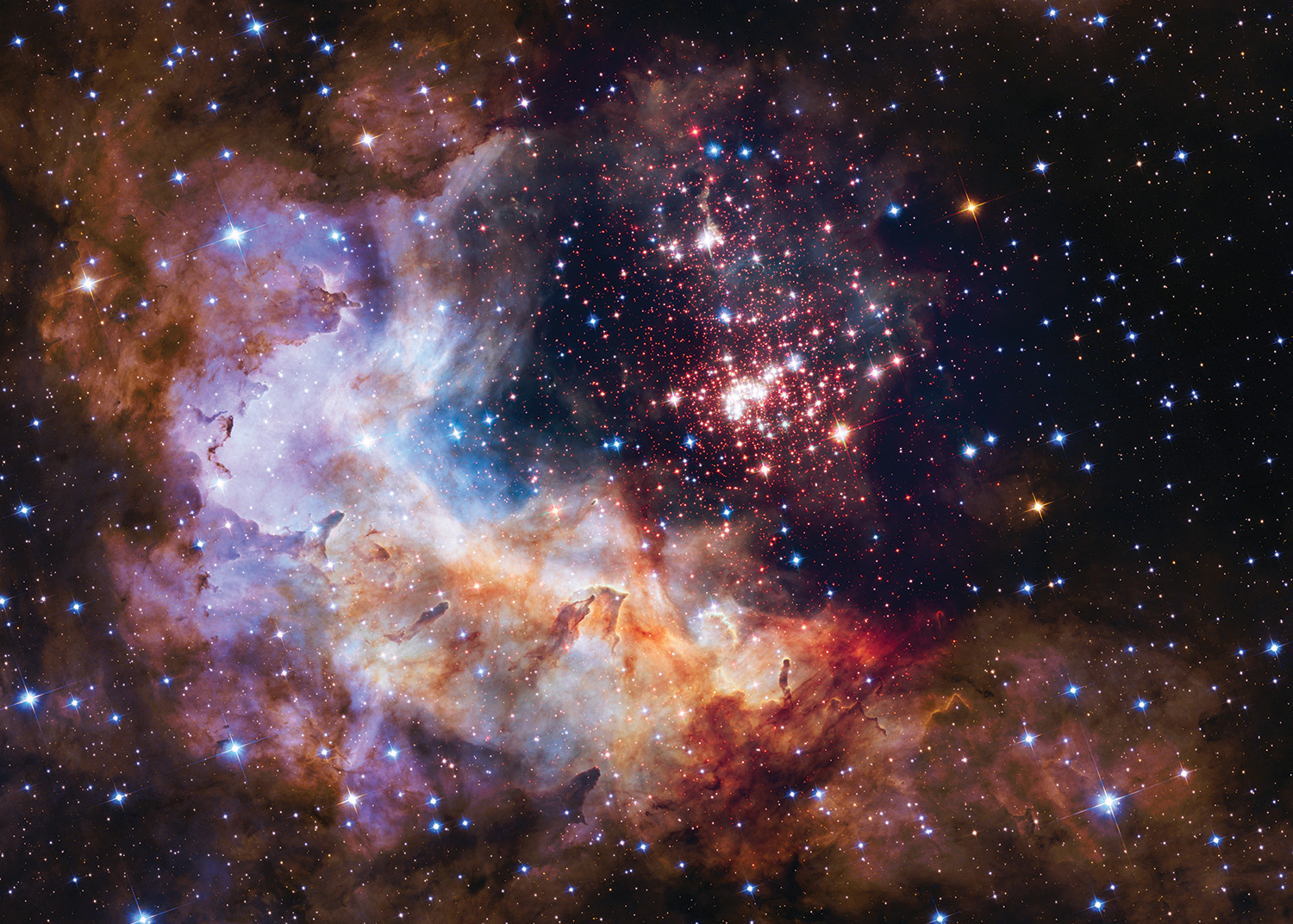2117th Stated Meeting | October 17, 2023 | House of the Academy, Cambridge, MA, and Virtual | Morton L. Mandel Conversation
On October 17, 2023, Dava Newman (Director of the MIT Media Lab and former NASA Deputy Administrator) spoke about the MIT Media Lab’s work and the use of vast amounts of data collected by satellites to inform and motivate the public for the fight against climate change. The program included welcoming remarks by Academy President David W. Oxtoby. An edited and condensed version of Dr. Newman’s presentation follows.
Dava Newman
Dava Newman is Director of the MIT Media Lab; Apollo Professor of Astronautics at MIT; a Harvard–MIT Health, Sciences, and Technology faculty member; and a MacVicar Faculty Fellow. She served as NASA Deputy Administrator from 2015 to 2017.
I would like to take you on a bit of a journey throughout the solar system and then we will come back home to spaceship Earth. In all of exploration, we have three fundamental questions: Are we alone in the universe? Are there other habitable planets for scientific knowledge and discovery? Is there life elsewhere? On that last question, the evidence is mounting. Though somewhat a bold projection, I think we will find life elsewhere, perhaps in this decade.
The Hubble Space Telescope has been in operation for more than thirty years. It has transformed our view of the universe. To celebrate Hubble’s twenty-fifth year in orbit, we have an amazing image of the cluster Westerlund 2 and its surroundings. The giant cluster that we see of about three thousand stars is what we call Westerlund 2.
The James Webb Space Telescope is a hundred times more powerful than Hubble. To me, as an engineer and technologist, it is somewhat of a miracle that the Webb telescope is working. Not many remember how hard it was to construct and how over budget it was. It is one of the most difficult things I’ve ever been involved with. I worked on it from the NASA side. Five hundred things had to go right with the eighteen articulating gallium-plated mirrors so that the optics would be correct. If any one of them was wrong, we were out of business.
It has now become the world’s greatest observatory looking in the infrared. Its main mission is to unravel dark energy and dark matter, and what we are learning every day is just phenomenal. We are looking back 13.4 billion years. John Mather, a NASA Nobel laureate, thinks we can probably go back 13.6 billion years with Webb. Every day, when I wake up I look at my new Webb image because it’s so beautiful and a wonderful and inspiring way to start the day.
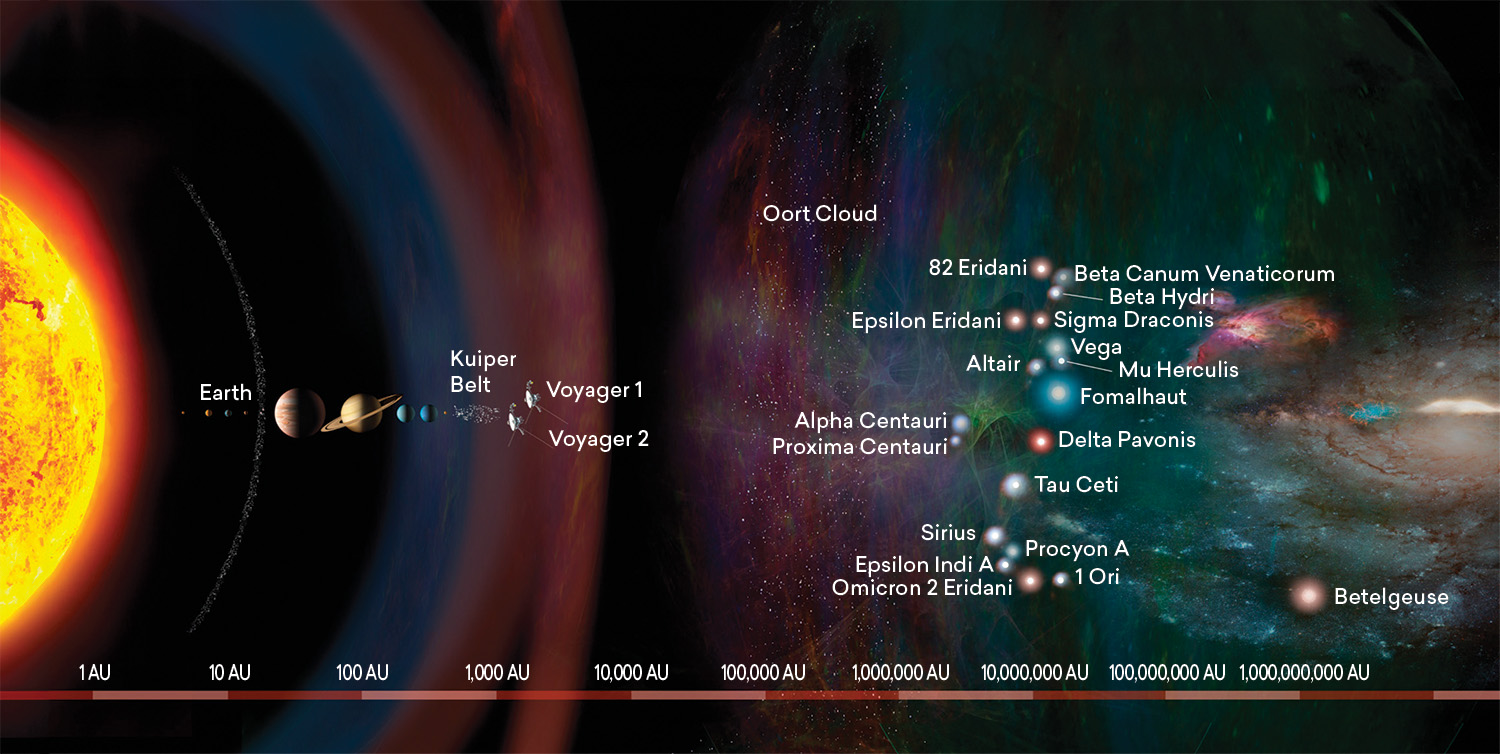
Let me put things in perspective. For the one hundred science missions that are ongoing right now, we are only getting to the Kuiper Belt. Past the Kuiper Belt, Voyager 1 and Voyager 2 are sending bits of data that tell us what’s out there. Using our imaginations and other advanced scientific instruments, we explore. Of the six thousand exoplanets that we have identified and cataloged, twenty-four of them are really important. They are in the Goldilocks zone: not too hot, and not too cold. If we go back to my three fundamental questions, maybe some of these exoplanets are just right for life. But because these exoplanets are ten to one hundred light-years away, we are not sending anyone there.
Let’s talk a little bit about Mars, then about getting people back to the moon, and finally what we can do to help make sure that Earth is healthy. Today, we are on Mars, and I mean that literally. Many of you may know of the Perseverance Rover. Our MIT experiment is called MOXIE (Mars Oxygen In-Situ Resource Utilization Experiment). We are making oxygen on Mars.
We think Mars was probably warm, wonderful, and maybe it supported life. Mars lost its electromagnetism about 3.5 billion years ago. That’s when things started going poorly. Today, the sun’s solar radiation ionizes the Martian atmosphere, and ablates the atmosphere away. Mars is left with a 1 percent CO2 atmosphere. The wind on Mars feels like a little feather, grazing your cheek.
Now back to making oxygen. Why would we want to make oxygen on Mars? If we split the carbon atoms off of that 1 percent CO2 atmosphere, and we recombine elemental oxygen, we get O2. You might think that’s all we need to keep our people alive. That’s the secondary reason for making oxygen on Mars. The first reason is for a fuel depot. When we send humans to Mars, it will be a round trip. It’s the only ethical way to do it. So it would be good if our fuel depot is waiting for us and we load up and then come back home. That would be the best way to do the mission. So we need oxygen first for propulsion and second to sustain life.
We are looking for fossilized 3.5-billion-year-old life on the planet; we are looking for the chemistry. We are zapping lasers into rocks and doing a lot of geology. We have many images of Mars. In fact, Mars is mapped better than our oceans. Using augmented reality, via our HoloLens, thirty geologists from around the world are taking the best images. Technology is enhancing the science that we are doing on Mars.
So we are already on Mars, and now we are going back to the moon with the Artemis missions. The Media Lab at MIT is on the next mission. I am the Apollo Professor of Astronautics at MIT. It has been fifty years since we sent someone to the moon. So it’s a high priority goal for me to get MIT back to the moon. Jack Schmitt is the only scientist to have visited the moon, and he had a hard time doing science there.
Today, we have a different design paradigm for space suits. Instead of looking like a Michelin man wearing a massive suit and with limited mobility, our idea is a BioSuit™ that uses mechanical counterpressure.
Designing a Second Skin—BioSuit™ for Human 2.0
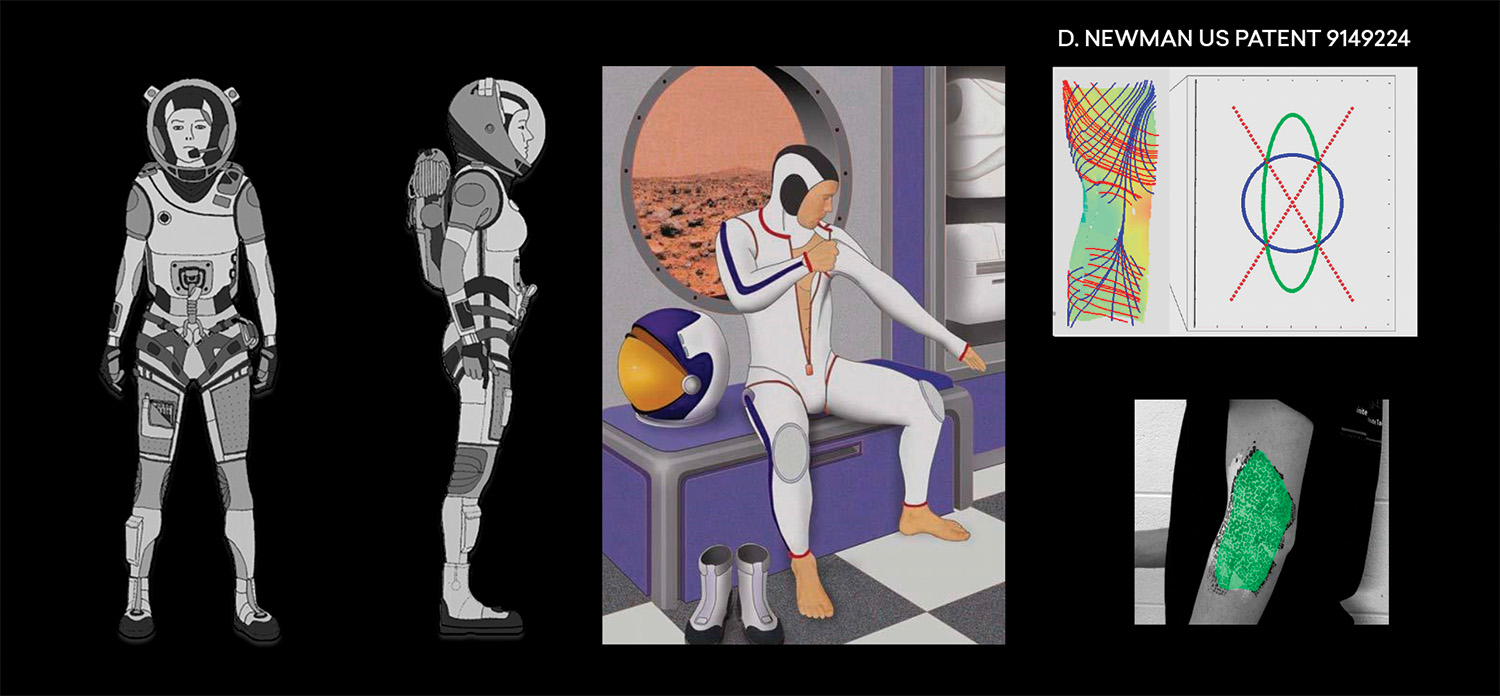
What does that mean? Well, rather than shrink-wrapping a suit onto someone, we start designing from the skin out. It’s literally a second skin suit. With a lot of mathematics and materials development, it seems technically feasible.
Because my design goals are to give you maximum mobility, I want a very lightweight suit. So we laser scan people and we do a lot of engineering analysis to determine the material I would need that could apply the correct amount of pressure. How would I design the patterning of the suit that could enable astronauts to have mobility and flexibility?
We have a lot of design challenges. We have to apply the right compression. We need to invent new materials. We need improved donning and doffing capabilities so you can dress yourself. Right now it is challenging to put the suit on by yourself. You have to jump into the bottom and then another astronaut has to put the top on and you need to shimmy yourself into the top. It’s much better if you can dress yourself because there are not a lot of spare astronauts on Mars. We also integrated some new sensing as well.
The image below is what our latest work looks like. We have multifunctional fibers, integrated sensing, tunable compression, and customized mobility.1
3D Knit BioSuit™: Integrated Prototype
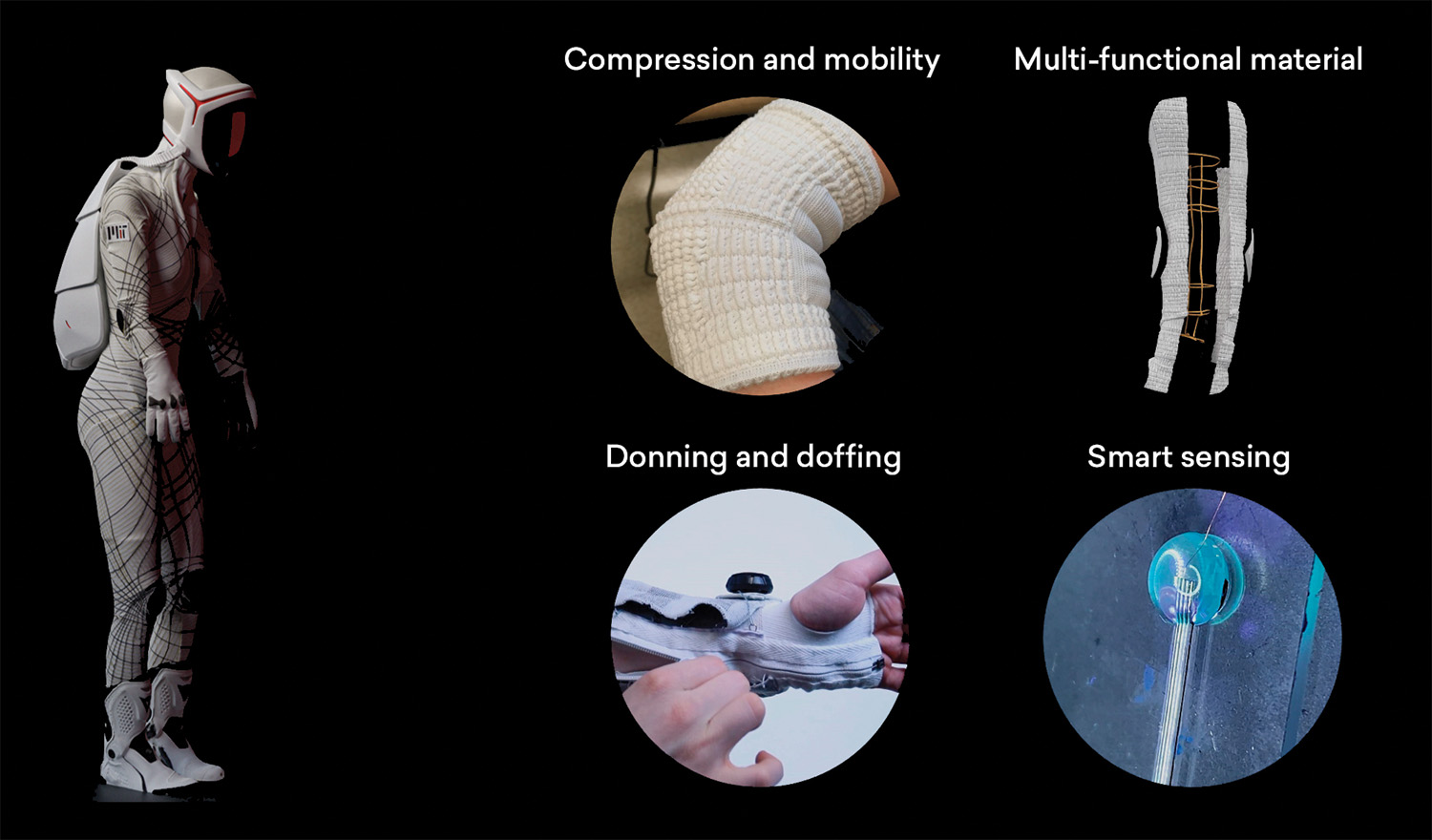
We use carbon-doped polyethylene to provide a little bit of radiation protection. When you go to the dentist and they put a lead apron on you before they take an X-ray, that shield forces you back into the chair. Well, we didn’t want that to happen with our space suits. So very smart colleagues at MIT in materials science and mechanical engineering came up with this carbon-doped polyethylene. It provides partial radiation control, only about 25 percent. We are working to improve on that.
People always ask me about commercial space travel. SpaceX is great. We paid Elon billions of dollars to succeed. The government is investing in private space companies, which are fast and agile though they are not developing a lot of new technology. Because we want everyone to succeed, funding is helping the private sector to accelerate things. There are private space missions. The last one was called Axiom Mission 2.
Now let’s talk about some of our work at the Media Lab and then some highlights from our climate work.
The Media Lab is a microcosm of MIT. It’s a real magical place. We have artists on faculty, plus scientists, engineers, and designers. For every problem or area in which we are doing research, everyone is sitting at the table. I don’t need only rocket scientists at the table. I know how they think and how they are trained. But a musician or a biologist or a geneticist is going to make me think differently and improve my work and projects. We all work together in research groups. The Media Lab’s work focuses on five themes: Future Worlds, Life with AI, Decentralized Society, Cultivating Creativity, and Connected Mind+Body.
For our theme on Future Worlds, we are working on design and action for the future we want to live in. If we can see it, then we can believe it, and we think we can accelerate positive change.
Let me highlight just a couple of themes. Working with a group called Open Minds, we are trying to change the conversation about dual energy and the climate challenge. Why do we want to change the conversation? Because the world needs cheap, affordable, reliable energy. And then we need to meet our climate goals. And we need everyone at the table to accomplish this.
I have a vision to create an Earth mission control. Earth is 4.5 billion years old and is going to do just fine without us. We are actually a nuisance to the planet. We want humanity to thrive and survive in balance with all living things.
We have almost real-time data, literal terabytes a day, from twenty-four Earth observing satellites. But we also fly aircraft and we have tens of thousands of sensors on the ground as well as in the ocean collecting data. And all of this is open data so they are shared with the world.
With the scientific data, we can find a way to live in balance with nature and our resources. We just need to find the will and the way. There will be some technology involved, but it is much more about changing human behavior, attitudes, and actions. We need to be serious about what we can do.
NOAA has a flood model called SLOSH. We take a lot of preflood images, use generative AI, and generate post-flood images. I called it satellite imagery of the future. This flood hasn’t happened, but I know it’s coming. I can’t tell you when it will happen, but I know that it will. The data in the image below are for Houston and the Gulf Coast. On the top we have infrastructure: houses, agriculture. And on the bottom, we are visualizing future flooding. We are helping city planners communicate more effectively, more visually, and more intuitively about flood risks to support climate resilient infrastructure development.
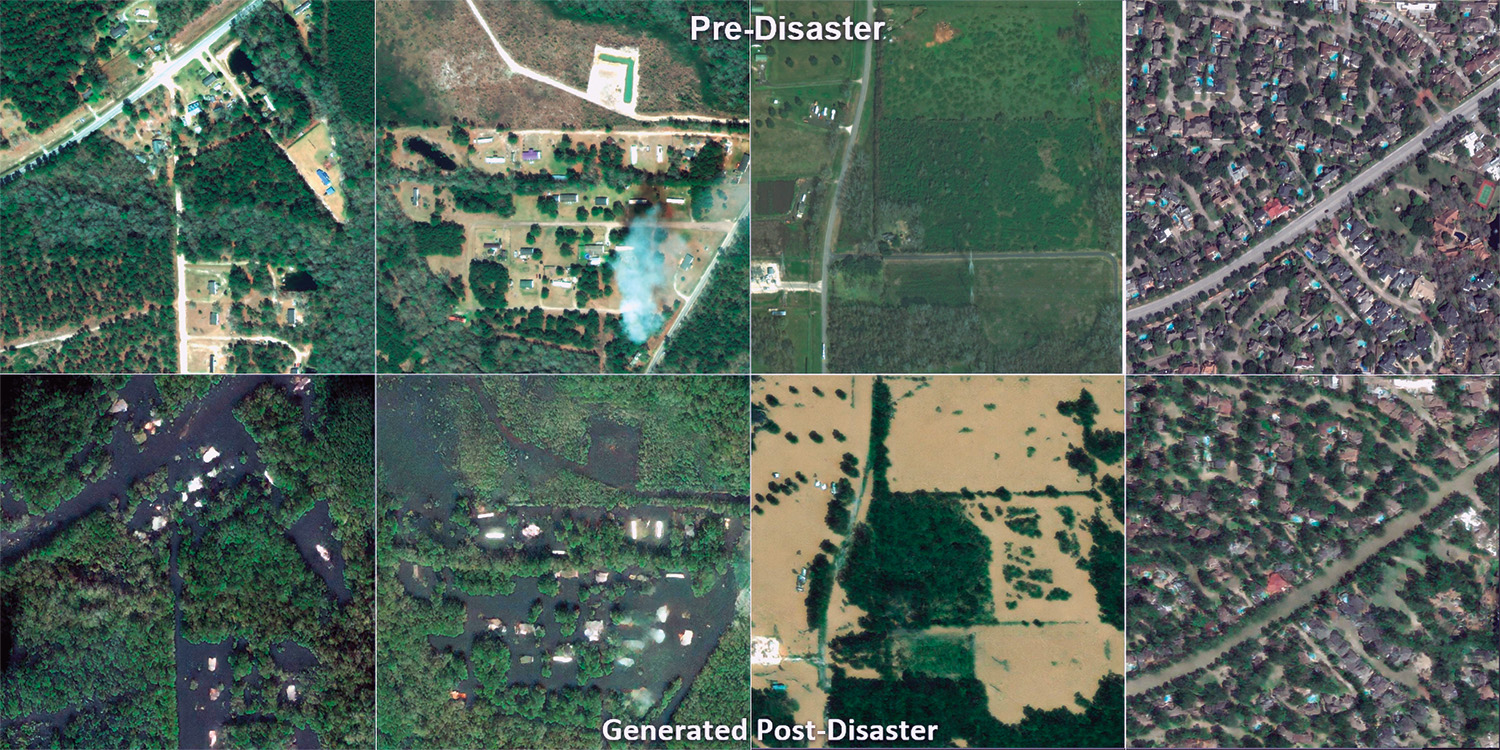
Let me end with a big idea: an Earth embassy. It would integrate engagement and empathy and be based on three pillars. One, it would provide extreme climate satellite imagery of the future, showing coastal floods, fires, drought, and sea level. Two, it would provide an operating system for Earth. And three, it would train ambassadors: our next generation climate leaders.
We have tough challenges ahead of us, and everyone needs to be at the table. Everyone gets a vote. Everyone has an opinion. The world is upside down today, with wars, hatred, and divides. I am an eternal optimist. I believe there are more folks who want to do the good work, the hard work that is necessary.
© 2024 by Dava Newman
To view or listen to the presentation, visit the Academy’s website.
Endnotes
- 1For more about the BioSuit™ prototype and new fibers, visit MIT’s website; and see Lavender Tessmer, Ganit Goldstein, Guillermo Herrera-Arcos, Volodymyr Korolovych. Rachel Bellisle, Cody Paige, Christopher Shallal, Atharva Sahasrabudhe, Hugh Herr, Polina Anikeeva, Svetlana V. Boriskina, Dava Newman, and Skylar Tibbits, “3D-Knit Spacesuit Sleeve with Multi-Functional Fibers and Tunable Compression,” ACADIA, October 27, 2022.


